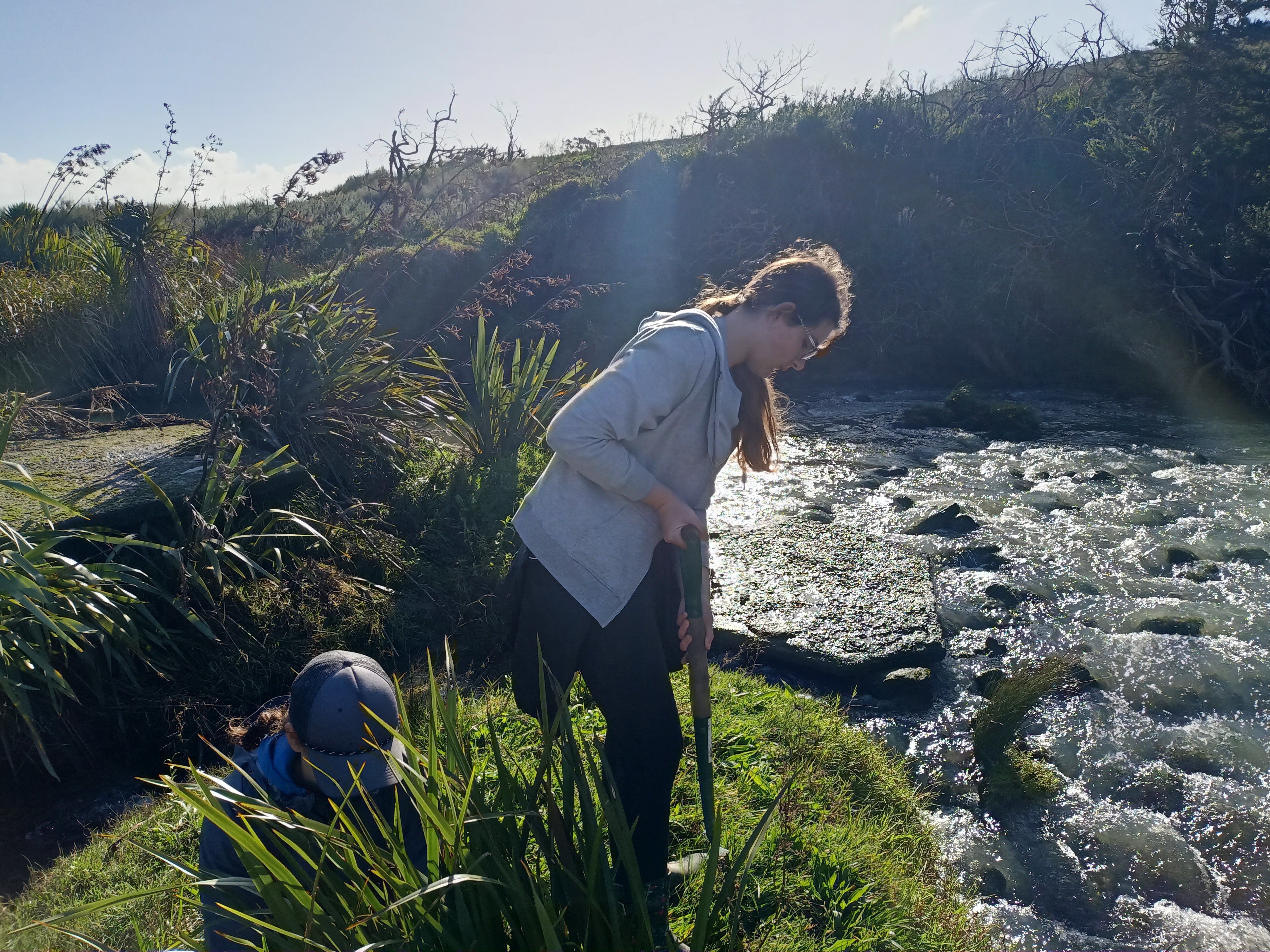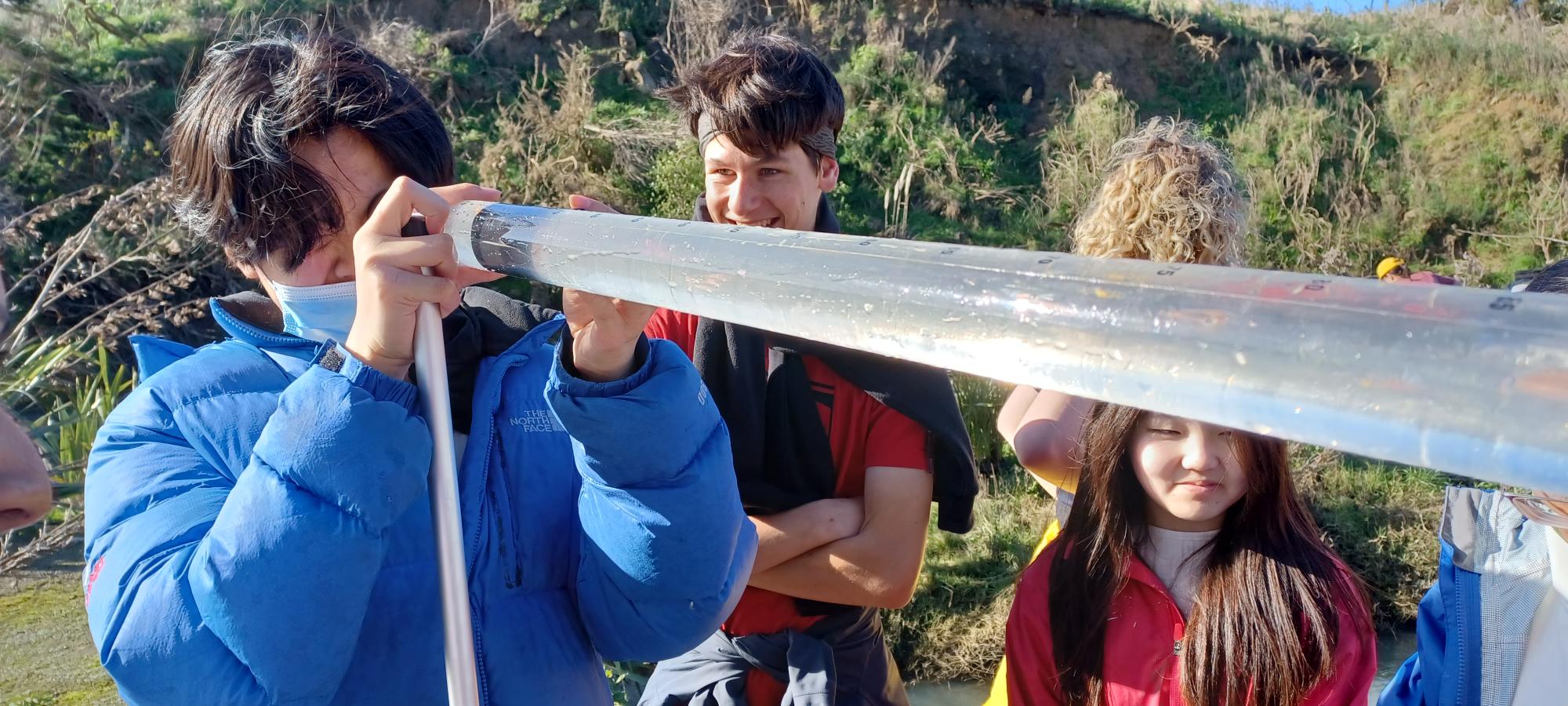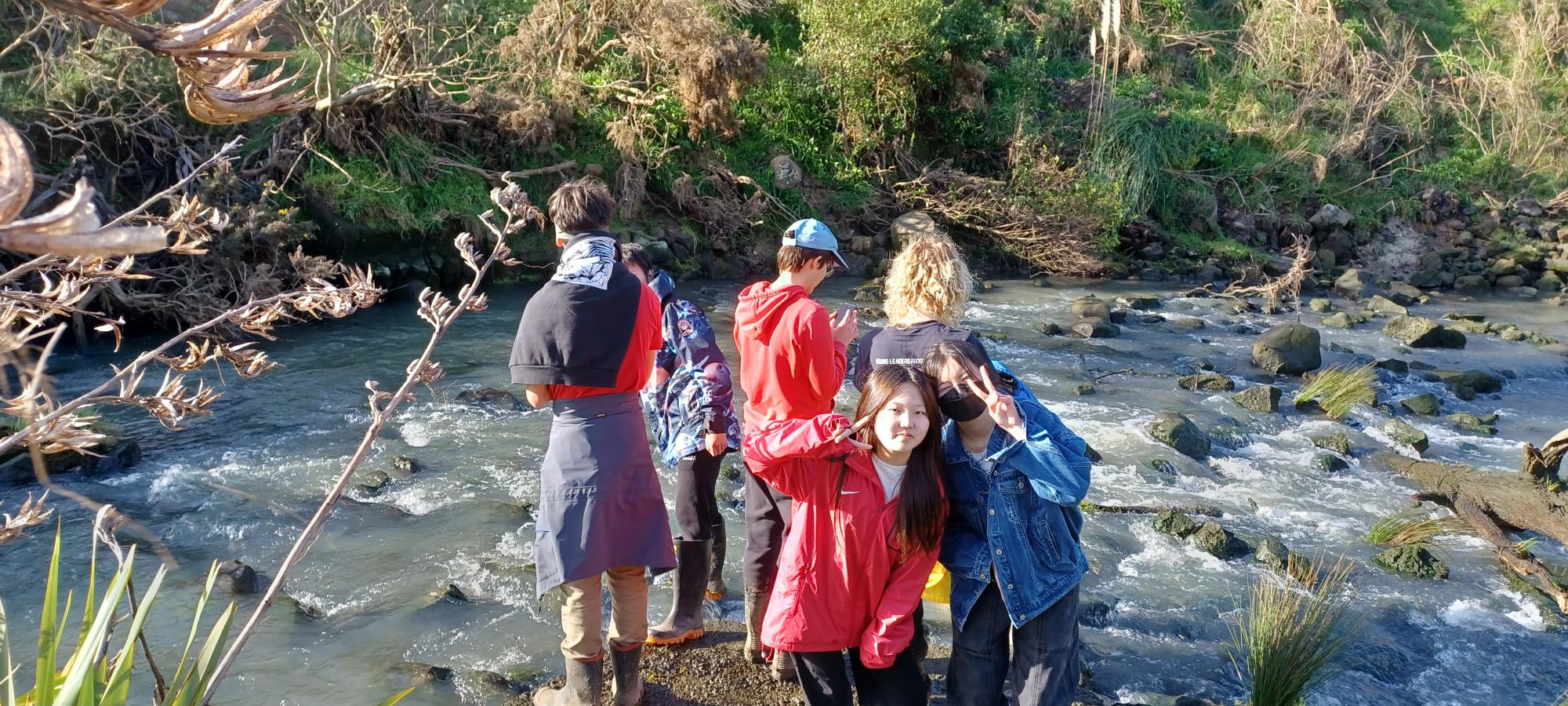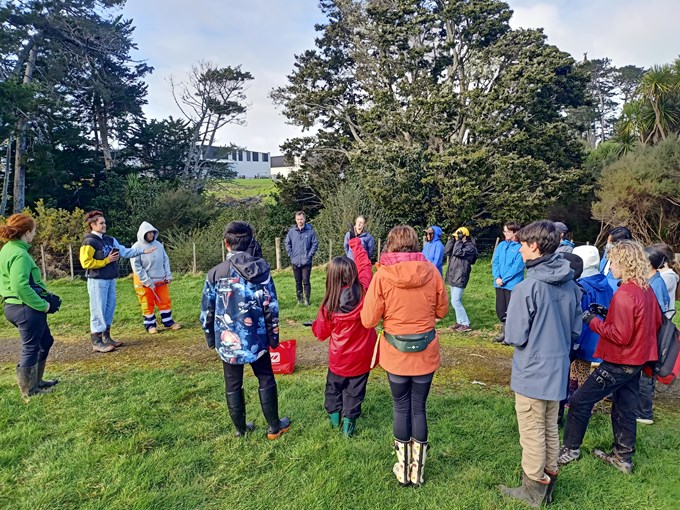Young Leaders for Sustainability, supported by the Manukau Harbour Forum, are forging ahead with their efforts to improve the environment.
Auckland Council’s Sustainable Schools team brought about 50 young leaders together at a wānanga earlier this year, and the rangatahi have pushed on with educational events based around the Puhinui Stream, and widespread planting programmes.
Ōtara-Papatoetoe Local Board chair Apulu Reece Autagavaia says today’s young people are tomorrow’s leaders. “They have an environmental awareness we need to encourage. Their passion for the environment underscores how they act, and we could learn from that.”
The young people, drawn from the nine local board areas that make up the forum, visited Papatūānuku Kōkiri Marae before exploring the Puhinui awa and Auckland Botanic Gardens.

Since then, they have staged a learning day at Puhinui Reserve centred on inanga - with the Whitebait Connection group running a session in the spawning zone to describe the fish’s lifecycle and the reasons why habitats remain so important.
Manurewa Local Board member and forum representative Joseph Allan says water testing results showed quality had decreased since testing a year earlier.
“It’s not good when you can’t find tuna or inanga when there were many of them in the area last year. One theory is that the decline was caused by this year’s heavy rain, but regardless, we must do more.”
There was also a session on rat catching using traditional Māori methods, with students learning about lunar calendar phases and how Te Pu-a-nga Maara uses that knowledge in its work, with students also providing updates on action plans in their schools.

A second day in July featured community park ranger Kara Goddard, who ran a session on pest plant identification and control.
“There are areas of the Puhinui Reserve that have been planted with natives that are being infested with pest plants, particularly privet and woolly nightshade,” she says.
Students cut plants and used gel paste to prevent regrowth. “They were enthusiastic and removed a lot of mature pest plants.”
Te Pu-a-nga Maara ran a follow-up session before the leaders returned to the inanga zone to plant harakeke and sedge to stabilise areas for inanga to lay eggs in.
And almost 1000 plants have been distributed to south Auckland schools, where students have developed planting plans for their schools or local streams.

Forum chair and Puketāpapa Local Board member Jon Turner says the students will return to Papatūānuku Kōkiri in October, where they will work in the māra kai gardens to recognise the generosity of the marae.
“There are also plans to rename the programme, for Manukau Harbour Forum members to join the leaders on the marae, and plans for next year's programme are already under way.”
Nine local boards – Franklin, Papakura, Manurewa, Māngere-Ōtāhuhu, Ōtara-Papatoetoe, Puketāpapa, Maungakiekie-Tāmaki, Waitakere Ranges and Whau – fund the forum’s work.
You can read a comprehensive report on the state of the harbour here [PDF], and find out more about the forum here.


